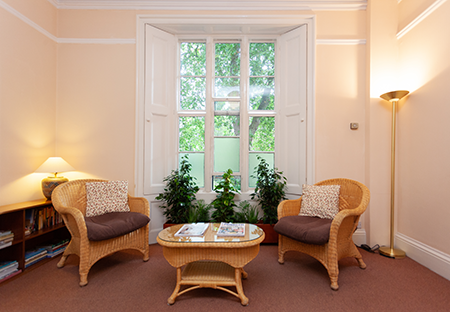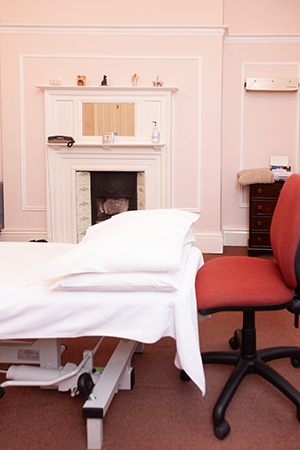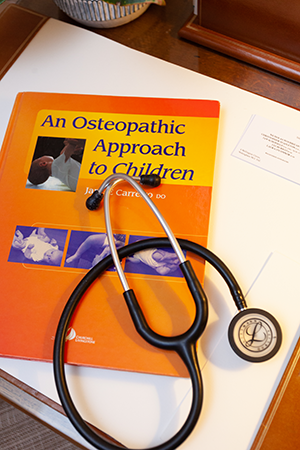What To Expect When You Visit Us
Osteopathy is a patient-centred approach to health; at your appointment we will listen to you, ask questions, and examine you, before then making a diagnosis and discussing treatment options. We use a variety of gentle, hands-on techniques to help release tension, improve mobility, and to restore your body to optimum function and health. We always try to make sure that you feel comfortable with the treatment we are offering. Osteopathy can treat a wide range of conditions and our gentle approach makes it suitable for everyone, regardless of age.
If you’re wondering whether osteopathy is the right treatment for you, please call us and we will try to answer your questions. If you have booked an appointment with us and have specific access requests then please check here or call us to let us know how we can help.
We look forward to welcoming you to the Practice.
Arriving at the Practice
On arrival, please press the buzzer for the osteopath you are seeing so that we can let you in. The waiting room is on the ground floor so please take a seat and your osteopath will come to collect you to take you to the treatment room. Toilets are available on the ground floor and on the first floor landing.
We ask all our patients and visitors to wear a mask (unless exempt) when inside the building in all communal areas – such as the waiting room – as this helps us to protect our more vulnerable patients. There is a box of masks in the waiting room if you have forgotten to bring your own and there is hand sanitiser in the hallway and in the waiting room. For more information on the precautions we are taking to protect our patients and staff, please click here.
We aim to see all of our patients on time but sometimes we run late. This might be because a previous patient has been delayed but, more often, it is because of the nature of clinical practice – to treat a patient appropriately it can sometimes takes longer than anticipated. Please know that we care deeply about giving you the right treatment and that doesn’t always fall into a neat appointment slot.

At your appointment
First appointments for new patients generally last between 60-90 minutes. This allows us to take a full history and to form a detailed assessment of the problem as well as ensuring that there is time to offer a first treatment. For follow-up consultations we allow between 30-45 minutes per appointment so that there is plenty of time to treat you. Please don’t be surprised if your appointment doesn’t last this long – we always offer the right treatment for you and sometimes this takes less time than we have allocated for your appointment.
At your first appointment we will:
- Ask questions about your symptoms, your general health and lifestyle, and any other medical care you are receiving or medication you are taking. We will record this in your case notes and it will remain confidential.
- Examine you. Like most medical examinations, we usually need to ask you to remove some of your clothes. We will leave the room whilst you do this and there are sheets or blankets available to cover up with if you would like them – or you can bring your own if you prefer. Please tell us if you are uncomfortable with this as we can suggest alternatives such as wearing shorts and a t-shirt for the appointment. You can also ask a friend or relative to accompany you and be present throughout your appointment.
- Ask you to make simple movements to observe your posture and mobility. Because of the body’s structure, the pain or stiffness you are experiencing in one part of your body may be linked to a problem elsewhere.
- Using our hands we will examine the health of your joints and body tissues (muscles, ligaments, fascia, and other connective tissues) and, depending on your symptoms, your organs too. We will ask for your permission before we touch you.
- We may also perform simple tests such as those a family doctor might do; for example, checking reflexes, taking blood pressure, listening to your chest with a stethoscope, or looking in your eyes or ears with standard medical instruments (such as an ophthalmoscope or an otoscope).

Diagnosis and treatment
After we have examined you we will explain what we have found and whether osteopathic treatment is appropriate and, if so, we will discuss a treatment plan with you. We will try to give you an idea of how many treatments you will need but it isn’t always possible to be exact as everyone responds to treatment in different ways and at different speeds.
We will explain what we are planning to do and what we are doing, and we will always ask your permission to treat you before we start. You can ask us questions at any time if you are unsure about what we are doing or what you have been told. Sometimes we will suggest specific follow-up exercises to help you with your recovery and to prevent a recurrence or worsening of your symptoms. If we think that your condition would be better treated by a different specialist we will explain this to you and will make the relevant referral if we can.
Your treatment will be entirely hands-on: we favour the use of extremely gentle osteopathic techniques to the extent that the movements and tension changes we make may be almost imperceptible. Whilst this may seem a little esoteric at first, this approach relies on making subtle, but very specific, adjustments to the mechanics of body tissues to encourage and facilitate the release of excessive tissue tension and the reduction of distortions in the structural tissues of the body. This approach, indirectly, has a beneficial effect on nervous system activity and the local circulation in the tissues being treated.
This subtle approach can be applied to all parts of the body, including the head in which small tolerances exist, and this explains our particular interest in conditions such as head pain, ear, nose and throat conditions, and temporo-mandibular joint dysfunction. The term cranial osteopathy is sometimes used to describe this approach although we feel it doesn’t describe it adequately as it can be applied equally to any part of the body (not just the head). As this is such a gentle treatment, it is particularly useful for treating very young and older patients for whom a more direct, active approach may be less suitable.

After your appointment
Osteopathic treatment is usually very gentle but, because of the physical nature of the treatment, you can sometimes feel a little bit sore in the first 24-48 hours after treatment. Please call us if you have any concerns and your osteopath will be happy to talk to you.
